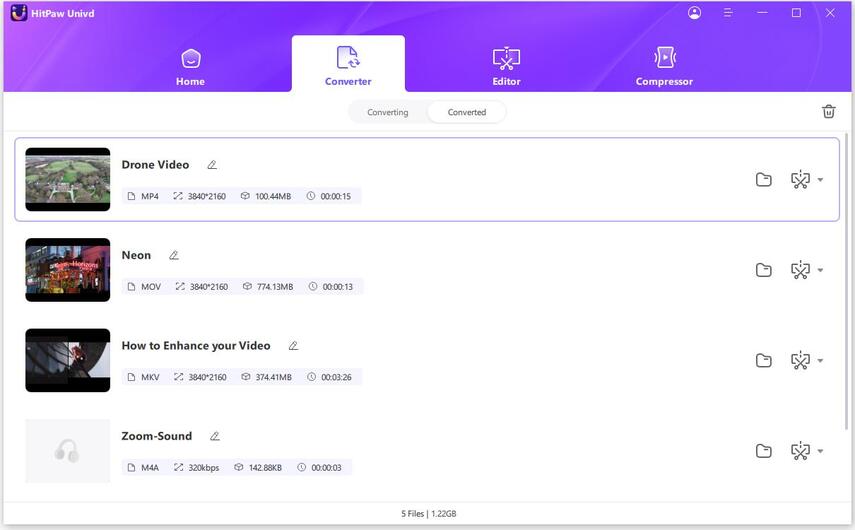The Ultimate Guide to WebM Codec
Introduction
Welcome to the ultimate guide to the WebM codec, your comprehensive resource for mastering this versatile video format. Whether you're a content creator, developer, or simply interested in the intricacies of web video, this guide is your go-to source. From understanding its technical aspects to exploring its wide-ranging applications, including integration with software such as After Effects, we'll cover everything you need to know. Join us as we delve deep into the world of WebM, unlocking its potential and empowering you to enhance your video projects with ease and efficiency.
Part 1. What is WebM Codec?
The WebM codec is a royalty-free, open-source video compression format developed by Google. It's designed for use with HTML5 video, offering efficient encoding and decoding for web-based content. Significantly, WebM utilizes the VP8 or VP9 video codecs and the Vorbis or Opus audio codecs, providing high-quality compression while maintaining a small file size.
Advantages of using the WebM codec include:
- High-Quality Compression: Efficiently maintains video quality while reducing file size for fast streaming.
- Open-Source Nature: Freely available for download, fostering innovation and collaboration.
- Royalty-Free: No licensing fees are required, encouraging widespread adoption.
- Transparency and Accessibility: Accessible specifications and source code for optimization, enhancing performance.
Compatibility of the WebM codec extends across various platforms and devices:
- Web Browsers: Most modern web browsers, including Google Chrome, Mozilla Firefox, and Microsoft Edge, support WebM playback without additional plugins or extensions.
- Operating Systems: WebM is compatible with major operating systems such as Windows, macOS, and Linux, ensuring seamless playback across different devices, including support for Sony Vegas WebM codec integration and native playback in Windows 10.
- Mobile Devices: Many smartphones and tablets running Android and iOS can decode and play WebM videos natively, ensuring a consistent viewing experience across devices.
- Multimedia Software: Popular multimedia applications like VLC Media Player, FFmpeg, and Adobe Premiere Pro offer support for encoding, decoding, and editing WebM files, catering to professional workflows and enhancing versatility.
Part 2. Exploring WebM Codec Applications
WebM Codec in Popular Video Editing Software
1. Sony Vegas:
- Seamless Integration: Sony Vegas seamlessly supports the WebM codec, enabling hassle-free import, editing, and export processes.
- Efficient Rendering: With the WebM codec, Sony Vegas ensures faster rendering times, allowing users to complete projects more quickly.
- Smaller File Sizes: WebM's advanced compression techniques result in smaller file sizes, optimizing storage and facilitating smoother editing workflows.
2. Premiere Pro:
- Native Compatibility: Premiere Pro natively supports WebM files, allowing users to work with them directly without the need for additional plugins.
- Enhanced Performance: With the WebM codec Premiere Pro offers efficient rendering and playback, ensuring seamless editing experiences.
- Optimized Workflow: WebM's compression capabilities lead to reduced file sizes, enabling faster exports and smoother content delivery.
3. After Effects:
- Seamless Integration: After Effects seamlessly incorporates the WebM codec, enabling users to work with WebM files directly within the software.
- Efficient Rendering: The WebM codec in After Effects results in faster rendering times, accelerating project completion.
- Streamlined Workflow: With webm codec After Effects, users experience smoother editing processes and benefit from smaller file sizes, enhancing overall productivity.
The integration of the WebM codec in popular video editing software like Sony Vegas, Premiere Pro, and After Effects offers benefits such as efficient rendering, smaller file sizes, and seamless workflow integration, enhancing the editing experience for users. Additionally, users can easily access and utilize the WebM codec by downloading it for their editing needs.
Part 3. Installing and Configuring WebM Codec
1. Downloading and Installing WebM Codec
For Windows 10:
1. Visit the official WebM codec Windows 10 website.
2. Navigate to the "Downloads" section and select the appropriate version for Windows.
3. Download the installer and follow the on-screen instructions to complete the installation process.
4. Once installed, the WebM codec should be ready for use in compatible applications like Sony Vegas, Premiere Pro, and After Effects.
For macOS:
1. Open your web browser and search for "WebM codec download for macOS."
2. Head to the "Downloads" section and choose the macOS version.
3. Download the installer package and double-click to open it.
4. Follow the installation prompts to complete the setup process.
5. After installation, the WebM codec Mac should be available for use in supported video editing software.
2. Configuring WebM Codec Settings
For optimal performance, configure the WebM codec settings as follows:
- Encoding Settings: Adjust the encoding settings based on your specific requirements, such as bitrate, resolution, and quality using the Google WebM codec.
- Audio Settings: Set the audio codec parameters, including bitrate and sample rate, to achieve the desired audio quality.
- Container Format: Choose the appropriate container format (e.g., .webm) for your video files to ensure compatibility across platforms and devices.
- Hardware Acceleration: Utilize hardware acceleration options if available to expedite the encoding process and improve overall performance.
3. Ensuring Compatibility and Smooth Playback
WebM codec compatibility with major web browsers can be ensured by following these steps:
1.Browser Support: Confirm that the web browser you're using supports WebM playback. Most modern browsers like Google Chrome, Mozilla Firefox, and Microsoft Edge offer native support for WebM.
2.Codec Installation: Ensure that the WebM codec is installed and properly configured on your operating system. Follow the steps outlined earlier to download and install the codec for your specific OS.
3.Fallback Options: Consider providing fallback options, such as alternative video formats (e.g., MP4), for browsers that do not support WebM playback. This ensures a consistent viewing experience across different browsers and devices.
4.Testing: Test your WebM-encoded videos across various web browsers and devices to ensure smooth playback and compatibility. Make adjustments to encoding settings if necessary to optimize performance.
By following these steps, you can successfully download, install, and configure the WebM codec on different operating systems, ensure compatibility with major web browsers, and achieve smooth playback of WebM-encoded videos.
Part 4. How to Convert Video to WebM Format
HitPaw Univd (HitPaw Video Converter) is an intuitive software designed for seamless video conversion tasks. With its user-friendly interface and robust features, the HitPaw Univd simplifies the process of converting videos, including those encoded with video webm codecs VP9. Whether you're looking to convert formats, adjust settings, or enhance video quality, HitPaw Univd offers a reliable solution for all your video conversion needs.
Features
- Versatile Conversion: Seamlessly convert photo and video formats with ease.
- Extensive Video Downloads: Access over 10,000 sites to download videos effortlessly.
- Music Extraction: Extract music from popular platforms hassle-free.
- Robust Editing Capabilities: Edit videos efficiently to achieve desired results.
- Various Tools: Includes image compressor, screen recording, and 2D to 3D conversion.
- One-Stop Solution: HitPaw Univd serves as a comprehensive video processing software on Mac, supporting the webm codec for optimal functionality.
Steps
Step 1. Download and install the HitPaw Univd to a PC or MAC Computer.
Step 2. Launch the software and click on the "Add Files" button to import your WebM files.

Step 3. Choose webm as the output format from the output format list.

Step 4. Click Convert to start converting video to WebM without losing quality.

Step 5. Once the conversion is complete, you can locate the WebM files in the Converted tab. This program can be used as a video player to play the converted videos directly.

Conclusion
The WebM codec stands out as a versatile and efficient solution for online video content. Its open-source nature, high compression efficiency, and broad support make it an excellent choice for web-based multimedia. Whether you're a content creator, developer, or simply a user looking for seamless video experiences, understanding WebM is invaluable. For converting your videos to WebM or any other format effortlessly, we recommend HitPaw Univd. With its user-friendly interface and powerful features, it's the perfect tool for all your video conversion needs.







 HitPaw Photo Object Remover
HitPaw Photo Object Remover HitPaw Video Object Remover
HitPaw Video Object Remover HitPaw VikPea (Video Enhancer)
HitPaw VikPea (Video Enhancer)



Share this article:
Select the product rating:
Daniel Walker
Editor-in-Chief
My passion lies in bridging the gap between cutting-edge technology and everyday creativity. With years of hands-on experience, I create content that not only informs but inspires our audience to embrace digital tools confidently.
View all ArticlesLeave a Comment
Create your review for HitPaw articles